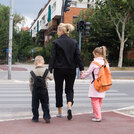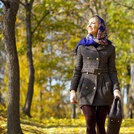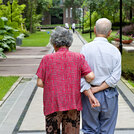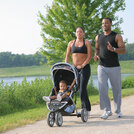Saelens, Brian E., James F. Sallis, Jennifer B. Black, and Diana Chen. (2003) Neighborhood-based differences in physical activity: An environment scale evaluation. American Journal of Public Health 93(9), 1552-1559.
Fast Fact Library
Hartig, Terry, Gary W. Evans, Larry D. Jamner, Deborah S. Davis, and Tommy Gärling. (2003). Tracking restoration in natural and urban field settings. Journal of Environmental Psychology, 23(2), 109-123.
Wolf, Kathleen L. (2003). Public response to the urban forest in inner-city business districts. Journal of Arboriculture, 29(3), 117-126.
Wolf, Kathleen L. (2003). Freeway roadside management: The urban forest beyond the white line. Journal of Arboriculture 29(3), 127-136.
Kuo, Frances E. (2003). The role of arboriculture in a healthy social ecology. Journal of Arboriculture. 29(3), 148-155.
De Vries, Sjerp, Robert A. Verheij, Peter P. Groenewegen, and Peter Spreeuwenberg. (2003). Natural Environments - Healthy Environments? An Exploratory Analysis of the Relationship Between Greenspace and Health. Environment and Planning. A 35(10), 1717-1731.
Takano, Takehito, Keiko Nakamura, and Masafumi Watanabe. (2002). Urban residential environments and senior citizens’ longevity in megacity areas: The importance of walkable green spaces. Journal of Epidemiology and Community Health, 56(12), 913-918.
Howze, Elizabeth H., Kenneth E. Powell, Elaine J. Stone, and Mummy W. Rajab. The effectiveness of interventions to increase physical activity: A systematic review. American Journal of Preventive Medicine, 22, no. 4S (2002): 73-107.
Taylor, Andrea Faber, Frances E. Kuo, and William C. Sullivan. (2002). Views of nature and self-discipline: Evidence from inner city children. Journal of Environmental Psychology, 22(1), 49-63.
Lange, Eckart, and Peter V. Schaeffer. “A Comment on the Market Value of a Room with a View.” Landscape and Urban Planning 55, no. 2 (2001): 113–20. https://doi.org/10.1016/s0169-2046(01)00148-7.





